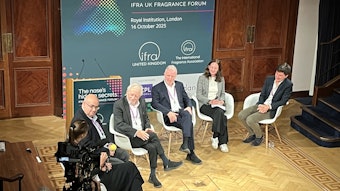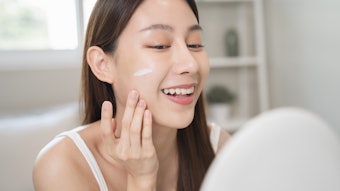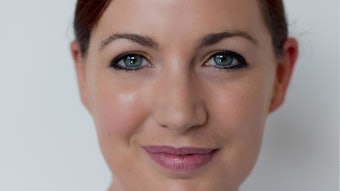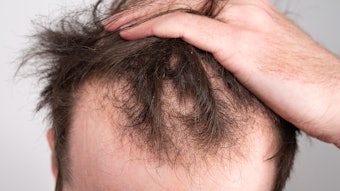Subjects summarized in this literature review include neuropeptides and their impact on skin biology, toll-like receptors along with their contribution to the skin’s immune system, and the lack of UV protection by ordinary glass. Various reports from the 86th annual meeting of the British Association of Dermatology appear to suggest that efficacious preservative action in finished products may be more important than the absence of allergic reactions.
Formulating cosmetic practitioners must await future developments in the relatively new fields of neuroendocrinology. Compounders may have to await decisions by regulatory agencies. Follow-ups on new findings are not always obvious but may require some incubation before they can be exploited successfully.
Cutaneous Neuroendocrinology
Recent studies have shown that skin is an important target organ for many neuropeptide signals. The data also suggests that many of these substances are produced in the skin. The specialty cutaneous neuroendocrinology has emerged to study the brain-skin connection, according to Ralf Paus, MD, PhD, in the department of dermatology, University Hospital Schleswig-Holstein, Lübeck, Germany (see A “Brain-Skin Connection”). Acting as editor, Paus introduced this branch of skin research in a series of six papers published in the Journal of Investigative Dermatology.
In the first paper of the series, Arck et al.1 attempt to interpret the crosstalk between brain and skin upon exposure to various stress conditions. The authors identify 11 psychological stresses: infection, excitation, heat/cold, UV light, ozone, toxic agents, stretch, mechanical damage, free radicals, allergens, and high/low humidity. Exposure to psychological stress can elicit or trigger various central stress responses such as corticotropin release, adrenocorticotropic hormone (ACTH) and prolactin. Mast cells in the skin respond to environmental stress factors for “exporting” histamine, nerve growth factors and interleukins.
In the second paper of this series, the concept of a peripheral itch mediator is rejected in favor of the existence of components released by immune epithelial or endothelial cells that trigger the pathophysiological activation of pruritus.2 The authors enumerate neuromediates for itching, pain and burning, and describe various neuropeptides, neurotrophins and receptors. Nevertheless, they point out that much more work will be required to identify the essential molecules to gain an ultimate understanding of and alleviation within the central nervous system.
The third paper is a discussion of neurotrophins (NT) in skin biology.3 At this time, it is known that NTs and their receptors play important roles in stress-induced hair loss, psoriasis and atopic dermatitis. Most intensive studies of NTs began only about 11 years ago, but their impact on different cell populations in skin is well established. NTs stimulate keratinocyte and melanocyte proliferation and inhibit apoptosis. They also regulate the development of Merkel cells and stimulate proliferation of endothelial cells. Finally, NTs stimulate fibroblast migration and mast cell degranulation.
The latter portion of the series begins with an article in which Peters and her colleagues explore the neuropeptides’ activity after their release from cutaneous nerves or skin or immune cells in response to noxious stimuli.4 The neuropeptides initiate host immune responses, but they also regulate proinflammatory events. The authors anticipate that additional work in this field will result in novel therapies for the management of diseases resulting from inflammation, remodeling, angiogenesis and neoplasm. The better-known neuropeptides discussed in this paper are Substance P, calcitonin gene-related peptide and bradykinin.
In the fifth paper, Grando aet al.5 note that autocrine adrenergic and cholinergic signal transduction networks in human skin contribute to homeostatic and compensatory responses affecting keratinocytes and melanocytes. It has been established that human keratinocytes have the ability to synthesize epinephrine from phenylalanine to create an adrenergic system within the epidermis. The catecholamines induce melanogenesis and participate in vitiligo. Cholinergic control of keratinocytes includes their migration, and acetylcholine plays a role in atopic dermatitis. Overall, the non-neural adrenergic and cholinergic systems in the skin are significant participants in many dermatoses.
The final paper in this series addresses melanocortin (MC) and its receptors (MCR).6 The MCs, including ACTH and g, b, and a-MSH (melanocyte-stimulating hormone), are derived from proopiomelanocortin in the skin. UVB light stimulates formation of both MCs and MCR. Melanin formation (tanning) is upregulated by ACTH/a-MSH; and MC-5R is sebotrophic in humans. Some evidence exists for implicating MC in the proliferation and differentiation of keratinocytes. Finally, a-MSH is part of the innate host defense barrier and the authors project that further knowledge of skin physiology will offer new therapies for various skin diseases.
Cutaneous neuroendocrinology is a new topic for dermatology. Coverage of this potentially important topic in this review is admittedly limited. Nevertheless, cosmetic scientists should become at least acquainted with this topic. Readers are reminded that the six papers discussed dealt primarily with the current status of the topic at the time of publication. The authors consistently note that more information must be forthcoming before novel treatment modalities can be realized.
Skin Biology
Peroxisome proliferator-activated receptors: A group of 11 investigators associated with the Jake Gittlen Research Institute at the Pennsylvania State University College of Medicine report that they have identified peroxisome proliferator-activated receptors (PPARs) as important regulators of sebum production.7 PPARs are members of the nuclear hormone receptor family; they regulate sebum production and, possibly, sebum storage. The authors suggest that modulation of PPARs activity may offer a new therapeutic strategy for acne treatment.
Toll-like receptors: Toll-like receptors (TLRs) are members of a recently identified group of cell surface receptors that are important in the skin’s immunological armamentarium. Ten of these receptors have been studied and are the subject of a comprehensive review (227 references) by three American authors.8 The term TLRs arises from their resemblance of these receptors to a membrane receptor first identified in fruit flies. Mutant forms of this protein result in distorted phenotypic offspring because the protein controls the dorsoventral axis.
Cosmetic chemists’ interest in these receptors is steadily rising because of their anticipated role in innate and adaptive immunity in skin diseases such as UV light injury, atopic dermatitis and candidiasis. Numerous illustrations accompany the review, which is recommended to readers with interest in the broad group of immunological skin diseases (see Toll-like Receptors in Dermatologic Disease).
Repairing damage to barrier homeostasis: During the past two decades, the industry learned a great deal about the requirements for maintaining the barrier permeability of the skin. However, limited information has been provided to help explain how the skin actually repairs damage to barrier homeostasis. A significant contribution to this understanding has been provided in a paper by J. P. Hachem,9 in cooperation with others who have been active in this field. Any breach in the skin’s barrier triggers a rapid response, within 15 to 30 min, of lamellar bodies. Although the full sequence of events must be further elucidated, it appears that serum proteases play a central role in the skin’s homeostasis of barrier properties.
Nitric oxide: Since 1931, when the Nobel Prize was awarded to Otto Warburg for his work in physiology or medicine, his ingenious experiments in cell respiration have received little attention except in textbooks. Cytochrome oxidase is blocked by carbon monoxide and also by nitric oxide (NO). Today it is known that NO is a signaling molecule in the central nervous system and in the periphery; its intercellular contribution also is recognized. The sources of NO in epidermal keratinocytes have recently been identified as derived from the neuropeptide calcitonin gene-related peptide (CGRP) and nonenzymatic degradation of stores of S-nitrosothiols.10
The authors’ observation of the effect of a neuropeptide on keratinocyte levels of NO is a practical consequence of the importance of cutaneous neuro-endrocrinology.1–6 The presence of cellular NO in keratinocytes may block UV damage and subsequent immune suppression and photoaging.
Transforming growth factor a: Blood plasma is the liquid component of blood. Serum refers to blood plasma from which the clotting factors have been removed. Keratinocytes (KC) in uninjured human skin are not in direct contact with serum. Serum—but not plasma—encourages KC to migrate in accordance with the requirements of wound healing. Wound healing is not normally considered in the realm of cosmetics but re-epithelialization requires that KCs migrate across the wound to form a new surface to close the wound. Nonhealing wounds are obviously serious cosmetic defects, and it is pertinent to identify the important growth factors in human serum that effect the motility of KCs. Five authors from the University of California and from the Xijing Hospital in Xian, China, suggest that the transforming growth factor a is the major motility stimulator present in human serum.11
Skin Photobiology
Hormonal stimulation of melanin content: In March 1994, during a two-daysymposium on photoprotection of the skin, T. B. Fitzpatrick and Jean L. Bolognia made the prediction that “hopefully in the near future we will be able to increase the melanin content in the skin by biochemical or hormonal manipulation.”12 It has taken some time to validate this prophecy in humans, although some studies have been completed with promising results.
Eight Australian researchers have reported that a synthetic melanocyte-stimulating hormone can augment melanin production and can provide photoprotection to individuals who consistently burn in direct sunlight.13 The melanotropin (Nle4-D-Phe7) melanocyte-stimulating hormone was delivered subcutaneously to the abdomen of 59 subjects, with an additional 20 control subjects. Side effects, primarily nausea, reduced the number of test subjects to 47. The melanin density in the unexposed inside of the upper arm was increased. As measured by Mason-Fontana stain and image analysis, the melanin content rose spectacularly in subjects exhibiting low MEDs. Sunburn injury was decreased by the newly formed melanin as measured by the numbers of sunburn cells or the reduced formation of thymine dimers. Thus, the basic objectives of this study were fulfilled. Still, the high numbers of subjects who could not tolerate the initial drug dosing and the absence of repeat treatment must be viewed with concern.
Congenital nevi: During the period covered by this review, several manuscripts addressed aspects of congenital (melanocytic) nevi (CN). Most nevi are not precursors of diseases but are tolerated as discolored areas of regular skin. Nevertheless, the most common significant dermatological issue is the question of whether they develop into or are precursors of melanotic skin problems.
One group of Japanese investigators14 suggests that medium-sized CN differ pathogenically from the smaller and sometimes acquired nevi. This conclusion challenges existing notions and warrants further investigations.
A group of Italian investigators15 concerned primarily with a means for identifying CN also were unable to identify the level of melanoma risk, as was the multicenter study of Seidenari et al.16
The most crucial assessment of CN is a systematic review by a German group.17 Its assessment is based on 14 analyses of 1,424 publications and also fails to identify CN as potential originators of melanoma.
Finally, it should be noted that the number of nevi at a specific anatomical site is not necessarily related to cutaneous malignant melanoma at this site.
A recently published paper18 discusses inadequate photoprotection provided by various types of glass used in the construction of housing and automobiles. The most important issue concerns the protection of eyes. The authors point out that standards for protective glasses have existed for approximately 35 years in Australia and the United States. Eye protection depends on the quality of the protective glasses worn, and it is suggested that they should be selected on the basis of the UV protection provided. Darkly tinted protective glasses may actually cause wider dilation of the pupils, with increased UV exposure of sensitive eye tissues. This is a useful paper for all concerned with protection from the damage caused by deliberate or incidental solar irradiation. Cosmetic chemists should examine and pay attention to the issues raised by this publication.
As noted in this author’s last review of current publications, the drug imiquimoda, an immune modifier, seems to benefit subjects suffering from photoaging. A group of German dermatologists now report19 that a small number of patients with organ transplants treated with immunosuppressants and suffering from actinic keratoses can benefit from topical treatment with this drug in cream form.
HaCaT cells: HaCaT cells are the immortalized substitutes for primary human keratinocytes. However, these cells may respond differently to UVB irradiation than do normal human keratinocytes, according to an investigation reported by a team of five researchers at the University of Indiana school of medicine.20 The results of this investigation by students of photochemistry suggest that the use of HaCaT cells as surrogates for normal human keratinocytes should be discouraged in studies designed to evaluate UVB-dependent responses.
a-Tocopherol: Ultraviolet irradiation in the wavelength ranges of both 280–320 mm (UVA) and 320–400 mm (UVB) has been shown to cause melanoma, but detailed information on the reaction pathway remains limited. A team of Swedish investigators21 undertook an in vitro study of the protection offered by b-carotene (b-C) or a-tocopherol (a-T). The results on foreskin melanocytes showed that a-T prevented intracellular glutathione (GSH) loss after UVA or UVB exposure. By contrast, b-C maintained GSH levels only during UVA treatment. The authors concluded that more detailed studies are needed to clarify the protective effects of a-T against UV-induced oxidative stress and melanocyte damage.
Surfactants
Sodium lauryl sulfate: The penetration profile of sodium lauryl sulfate (SLS) through stratum corneum has been reported to differ between uninvolved and diseased skin of subjects suffering from atopic dermatitis (AD). The Dutch investigators observed that the diffusivity of SLS was 12.7 x 10-6 cm2 h-1 in AD patients’ skin vs. 6.2 x 10-6 cm2 h-1 in the skin of control subjects.22 These findings made during patch testing suggest that AD patients should receive more skin protection than normal subjects.
Liposomes: The administration of topically applied drugs from liposomes has been promoted since Bangham discovered these types of suspension about 45 years ago. The reported enhancement of skin permeation by diverse drugs using these systems has been accepted generally by formulators even though the particle size of liposomes is much larger than the particle size of the individual drug molecule in solution or suspension in nonliposomal form. It has been well-established that drug particle size plays a role in drug penetration; yet liposomal drug administration continues to be a widely practiced technique. Meanwhile, enhanced skin permeation models have consistently avoided the question of particle size.
A team of German researchers23 recently reported that unilamellar liposomal administration of dye molecules tends to enhance their transfollicular permeation and that hair follicles in pig ears may serve as drug storage sites. Formulators should note that hirsute skin areas may represent sites in the epidermis that may be particularly important for liposomal drug administration.
Cosmetic Miscellany
Preservative allergies: Preservative allergies occupied many pages of the summaries of papers presented before the 86th annual meeting of the British Society of Dermatology.
A report of sensitization to preservatives collected in Great Britain and Europe during 2004 and 2005 included the adverse responses to methyldibromo-glutaronitrile, and this preservative has been withdrawn for use in leave-on products in the European Union.
Contact dermatitis tests were performed by a group of 10 dermatologists24 using the procedures of the British Contact Dermatitis Society. The results provided further evidence that formaldehyde and substances that release this compound are the most common causes of preservative allergy. The sites most frequently involved are the patient’s hands.
Another group of British investigators25 reported that the most common cosmetic sensitizers would include the group consisting of cocamidopropyl betaine, propolis cera, glyceryl thioglycolate, tosylamide/formaldehyde resin, oleamidopropyl dimethylamine, and mineral oil plus lanolin alcoholb. Still another report deals with hand dermatitis due to iodopropynyl butylcarbamate.26
A recent disclosure27 by investigators in Utah identifies contact allergy to preservatives by users of baby wipes. It is not surprising that allergies to formaldehyde-releasing preservatives should be noted in adult caretakers, but the investigators fail to address the possibility of existence of similar responses in infants under the care of these adults. This reviewer is forced to conclude that a rare reaction to a cosmetic preservative is medically more acceptable than the threat of a response to a possible microbial contamination.
Regarding those baby products identified as “antimicrobial,” there is a suggested triage between absolute safety and antimicrobial efficacy. The resolution could be made by a regulatory agency or more effectively by careful labeling of the product.
Before leaving the topic of adverse skin reactions, cosmetic practitioners are urged to note that the frequency of contact allergy to “medicaments” increases with age.28
Exfoliation by salicylic acid: The neutralization of salicylic acid reportedly does not interfere with its desqamating action.29 Therefore, the exfoliative action of salicylic acid is evidently not a function of pH.
Alcoholic hand products: Various alcoholic hand products on the British market were found to cause no significant adverse skin problems.30
Hair biology: Polish and German workers31 describe interference with melanogenesis in C57 B46 mice that were fed zinc ions (as Zn SO4.7H2O) in their drinking water, beginning four days after depilation and for various periods up to and more than one year. The authors report that eumelanin formation was reduced significantly without concomitant upregulation of pheomelanin. No attempt was made to interpret the molecular events during this experiment.
Finally, heat shock proteins (HSP) are generally identified as molecular chaperones involved in protein-folding assembly and transport. The expression of HSP 27 is the subject of a study by a group of Egyptian investigators32 at the University Hospital in Hamburg, Germany. The authors show that HSP 27 is expressed prominently in human scalp skins and hair follicles during late anagen and early catagen phases. Its expression is less significant in other phases of the human hair cycle.
References
1. PC Arck, A Slominski, TC Theoharides, EMJ Peters and R Paus, Neuroimmunology of stress: Skin takes center stage, J Invest Dermatol 126 1697–1704 (2006)
2. M Steinhoff, J Bienenstock, M Schmelz, M Maurer, E Wei and T Bíró, Neurophysiological, neuro-immunological, and neuroendrocrine basis of pruritis, J Invest Dermatol 126 1705–1718 (2006)
3. VA Botchkarev, M Yaar, EMJ Peters, SP Raychaudhuri, NV Botchkareva, A Marconi, SK Raychaudhuri, R Paus and C Pincelli, Neurotrophins in skin biology and pathology, J Invest Dermatol 126 1719–1727 (2006)
4. EMJ Peters, ME Ericson, J Hoisi, K Seiffert, MK Hordinsky, JC Ansel, R Paus and TE Scholzen, Neuropeptide control mechanisms in cutaneous biology: Physiological and clinical significance, J Invest Dermatol 126 1937–1947 (2006)
5. SA Grando, MR Pittelkow and KU Schallreuter, Adrenergic and cholinergic control in the biology of epidermis: Physiological and clinical significance, J Invest Dermatol 126 1948–1965 (2006)
6. M Böhm, TA Luger, DJ Tobin and JC García-Borrón, Melanocortin receptor ligands: New horizons for skin biology and clinical dermatology, J Invest Dermatol 126 1966–1975 (2006)
7. NR Trivedi, Z Cong, AM Nelson, AJ Albert, LL Rosamilia, S Sivarajah, KL Gilliland, W Liu, DT Mauger, RA Gabbay and DM Thiboutot, Peroxisome proliferator-activated receptors increase human sebum production, J Invest Dermatol 126 2002–2009 (2006)
8. SSW Kang, LS Kauls and AA Gaspari, Toll-like receptors: Applications to dermatologic disease, J Am Acad Dermatol 54 951–983 (2006)
9. J-P Hachem, E Houben, D Crumrine, M-Q Man, N Schurer, T Roelandt, EH Choi, Y Uchida, BF Brown, KR Feingold and PM Elias, Serine protease signaling of epidermal permeability barrier homeostasis, J Invest Dermatol 126 2074–2086 (2006)
10. E Yaping, SC Golden, AR Shalita, W-LS Lee, DH Maes and MS Matsui, Neuropeptide (calcitonin gene-related peptide) induction of nitric oxide in human keratinocytes in vitro, J Invest Dermatol 126 1994–2001 (2006)
11. Y Li, J Fan, M Chen, W Li and DT Woodley, Transforming growth factor-alpha: a major human serum factor that promotes human keratinocyte migration, J Invest Dermatol 126 2096–2105 (2006)
12. TB Fitzpatrick and JL Bolognia, Human melanin pigmentation: Role in pathogenesis of cutaneous melanoma, in Melanin, Its Role in Human Photoprotection, L Zeise, MR Chedekel and TB Fitzpatrick, eds, Overland Park, Kansas: Valdeman Publ Co (1995) pp 177–192
13. RStC Barnetson, TKT Ooi, L Zhuang, GM Halliday, CM Reid, PC Walker, SM Humphrey and MJ Kleinig, [Nle4-D-Phe7]-α-melanocyte-stimulating hormone significantly increased pigmentation and decreased UV damage in fair-skinned Caucasian volunteers, J Invest Dermatol 126 1869–1878 (2006)
14. N Ichii-Nakato, M Takata, S Takayanagi, S Takashima, J Lin, H Murata, A Fujimoto, N Hatta and T Saida, High frequency of BRAFV600E mutation in acquired nevi and small congenital nevi, but low frequency of mutation in medium-sized congenital nevi, J Invest Dermatol 126 2111–2118 (2006)
15. G Randi, L Naldi, S Gallus, A Di Landro and C La Vecchia, Number of nevi at a specific anatomical site and its relation to cutaneous malignant melanoma, J Invest Dermatol 126 2106–2110 (2006)
16. S Seidenari, G Pellacani, A Martella, F Giusti, G Argenziano, P Buccini, P Carli, C Catricalà, V De Giorgi, A Ferrari, V Ingordo, AM Maganoni, K Peris, D Piccolo and MA Pizzichetta, Instrument age- and site-dependent variations of dermoscopic patterns of congenital melanocytic naevi: a multicentre study, Brit J Dermatol 155 56–61 (2006)
17. S Krengel, A Hauschild and T Schäfer, Melanoma risk in congenital melanocytic naevi; a systematic review, Brit J Dermatol 155 1–8 (2006)
18. C Tuchinda, S Srivannaboon and HW Lim, Photoprotection by window glass, automobile glass, and sunglasses, J Am Acad Dermatol 54 845–854 (2006)
19. C Ulrich, JO Busch, T Meyer, I Nindl, T Schmook, W Sterry and E Stockfleth, Successful treatment of multiple actinic keratoses in organ transplant patients with topical 5% imiquimod: a report of six cases, Brit J Dermatol 155 451–454 (2006)
20. DA Lewis, SF Hengeltraub, FC Gao, MA Leivant and DF Spandau, Aberrant NF-kB activity in HaCaT cells alters their response to UVB signaling, J Invest Dermatol 126 1885–1892 (2006)
21. P Larsson, K Öllinger and I Rosdahl, Ultraviolet (UV) A- and UVB-induced redox alterations and activation of nuclear factor-kB in human melanocytes—protective effect of α-tocopherol, Brit J Dermatol 155 292–300 (2006)
22. I Jakasa, CM de Jongh, MM Verbeck, JD Bos and S Kezic, Percutaneous penetration of sodium lauryl sulphate is increased in uninvolved skin of patients with atopic dermatitis compared with control subjects, Brit J Dermatol 155 104–109 (2006)
23. S Jung, N Otberg, G Thiede, J Richter, W Sterry, S Panzner and J Lademann, Innovative liposomes as a transfollicular drug delivery system: Penetration into porcine hair follicles, J Invest Dermatol 126 1728–1732 (2006)
24. CT Jong, CM Green, CM King, DJ Gawkrodger,JE Sansom, JSC English, SM Wilkinson, AD Ormerod, MMU Chowdhury and BN Statham, Preservative sensitivity in the United Kingdom (2004–2005), 86th annual meeting British Contact Dermatitis Society, July 4–7, Manchester, UK, Brit J Dermatol 155 (Suppl 1) 68 (2006)
25. M Connolly, BN Statham, MMU Chowdhury, JSC English, DJ Gawkrodger, CM Green, CM King, AD Ormerod, SM Wilkinson and JE Sansom, Cosmetic and fragrance allergy in the UK, 86th annual meeting British Contact Dermatitis Society, July 4–7, Manchester, UK, Brit J Dermatol 155 (Suppl 1) 69 (2006)
26. RF Davis and GA Johnston, Occupational hand dermatitis due to iodopropynyl butylcarbamate in a wood preservative, 86th annual meeting British Contact Dermatitis Society, July 4–7, Manchester, UK, Brit J Dermatol 155 (Suppl 1) 75 (2006)
27. KS Fields, T Nelson and D Powell, Contact dermatitis caused by baby wipes, Supplement to J Am Acad Dermatol 5 S230–S231 (2006)
28. CM Green, CR Holden and DJ Gawkrodger, The frequency of contact allergy to medicaments increases with age, Brit J Dermatol 155 (Suppl 1) 77 (2006)
29. E Merinville, A Laloeuf and AV Rawlings, Neutralized salicylic acid: benefits of exfoliation without irritation, Brit J Dermatol (Suppl 1) 41 (2006)
30. CT Jong and BN Statham, Do alcohol hand products cause hand problems? A survey of British Contact Dermatitis Society members, Brit J Dermatol 155 (Suppl 1) 74 (2006)
31. PM Plonka, B Handjiski, D Michalczyk, M Popik and R Paus, Oral zinc sulphate causes murine hair hypopigmentation and is a potent inhibitor of eumelanogenesis in vivo, Brit J Dermatol 155 39–49 (2006)
32. MA Adly, HA Assaf and MR Hussein, Expression of the heat shock protein-27 in the adult human scalp skin and hair follicle: Hair cycle-dependent changes, J Am Acad Dermatol 54 811–817 (2006)
33. R Paus, TC Theoharides and PC Arck, Neuro-immunoendocrine circuitry of the ‘brain-skin connection,’Trends Immunol 27(1) 32–39 (2006)










